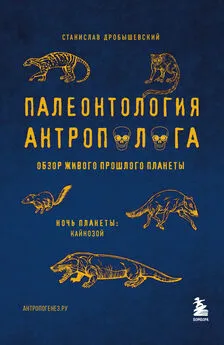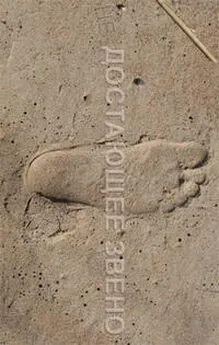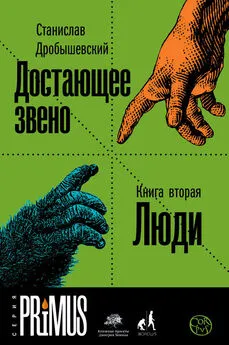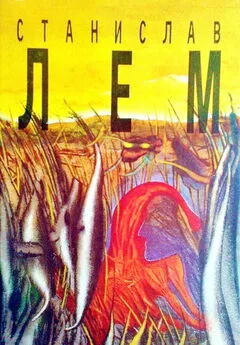Станислав Дробышевский - Палеонтология антрополога. Том 3. Кайнозой
- Название:Палеонтология антрополога. Том 3. Кайнозой
- Автор:
- Жанр:
- Издательство:неизвестно
- Год:2022
- ISBN:978-5-04-162005-9
- Рейтинг:
- Избранное:Добавить в избранное
-
Отзывы:
-
Ваша оценка:
Станислав Дробышевский - Палеонтология антрополога. Том 3. Кайнозой краткое содержание
Палеонтология антрополога. Том 3. Кайнозой - читать онлайн бесплатно ознакомительный отрывок
Интервал:
Закладка:
Buckley M. Ancient collagen reveals evolutionary history of the endemic South American ‘ungulates’ // Proceedings of the Royal Society B: Biological Sciences, 2015, V.282, № 20142671, pp.1–9.
Camens A. B. et Worthy T. H. Walk like a kangaroo: new fossil trackways reveal a bipedally striding macropod in the Pliocene of Central Australia // Journal of Vertebrate Paleontology, Programs and Abstracts, 2019, p.72. Ходьба короткомордых кенгуру.
Campbell K. E. et Tonni E. P. Preliminary observations on the paleobiology and evolution of teratorns (Aves: Teratornithidae) // Journal of Vertebrate Paleontology, 1981, V.1, № 3–4, pp.265–272.
Campbell K. E. et Tonni E. P. Size and locomotion in teratorns (Aves: Teratornithidae) // Auk, 1983, V.100, pp.390–403.
Campbell K. E., Frailey C. D. et Romero-Pittman L. The Pan-Amazonian Ucayali Peneplain, late Neogene sedimentation in Amazonia, and the birth of the modern Amazon River system // Palaeogeography, Palaeoclimatology, Palaeoecology, 2006, V.239, pp.166–219. Формирование Амазонки.
Cooper A., Turney Ch., Hughen K. A., Brook B. W., McDonald H.G. et Bradshaw C. J.A. Abrupt warming events drove Late Pleistocene Holarctic megafaunal turnover // Science, 2015, V.349, pp.602–606. Совместная роль климата и людей в вымирании мегафауны.
Crevecoeur I., Brooks A., Ribot I., Cornelissen E. et Semal P. Late Stone Age human remains from Ishango (Democratic Republic of Congo): new insights on Late Pleistocene modern human diversity in Africa // Journal of Human Evolution, 2016, V.96, pp.35–57.
Curnoe D., Xueping J., Herries A. I.R., Kanning B., Tacon P. S.C., Zhende B., Fink D., Yunsheng Zh., Hellstrom J., Yun L., Cassis G., Bing S., Wroe S., Shi H., Parr W. C.H., Shengmin H. et Rogers N. Human remains from the Pleistocene-Holocene transition of Southwest China suggest a complex evolutionary history for East Asians // PLoS ONE, 2012, V.7, № 3, № e31918, pp.1–28. Китайских «недохоббит» из Дейедун.
Durvasula A. et Sankararaman S. Recovering signals of ghost archaic admixture in the genomes of present-day Africans // Science Advances, 2020, V.6, № eaax5097, pp.1–9. Примесь от неизвестных гоминид у африканцев.
Emslie S. D. The fossil history and phylogenetic relationships of condors (Ciconiiformes: Vulturidae) in the New World // Journal of Vertebrate Paleontology, 1988, V.8, № 2, pp.212–228. Кондор Gymnogyps kofordi .
Fiedel S. J. Man’s best friend – mammoth’s worst enemy? A speculative essay on the role of dogs in paleoindian colonization and megafaunal extinction // World Archaeology, 2005, V.37, № 1, Archaeology in North America, pp.11–25. Люди и их собаки – главная причина вымирания мегафауны в Северной Америке.
Fiedel S. et Haynes G. A premature burial: comments on Grayson and Meltzer’s “Requiem for overkill” // Journal of Archaeological Science, 2004, V.31, pp.121–131. Люди – главная причина вымирания мегафауны в Северной Америке.
Field J. et Dodson J. Late Pleistocene megafauna and archaeology from Cuddie Springs, southeastern Australia // Proceedings of the Prehistoric Society, 1999, V.65, pp.275–301.
Firestone R. B., West A., Kennett J. P., Becker L., Bunch T. E., Revay Z. S., Schultz P. H., Belgya T., Kennett D. J., Erlandson J. M., Dickenson O. J., Goodyear A. C., Harris R. S., Howard G. A., Kloosterman J. B., Lechler P., Mayewski P. A., Montgomery J., Poreda R., Darrah T., Que Hee S. S., Smith A. R., Stich A., Topping W., Wittke J. H. et Wolbach W. S. Evidence for an extraterrestrial impact 12,900 years ago that contributed to the megafaunal extinctions and the Younger Dryas cooling // Proceedings of the National Academy of Sciences USA, 2007, V.104, № 41, pp.16016–16021. Похолодание в дриасе из-за падения кометы.
Gathorne-Hardy F.J. et Harcourt-Smith W.E.H. The super-eruption of Toba, did it cause a human bottleneck? // Journal of Human Evolution, 2003, V.45, pp.227–230. Критика влияния извержения вулкана Тоба.
Geer van der A., Lyras G., Vos de J. et Dermitzakis M. Evolution of island mammals. Adaptation and extinction of placental mammals on islands. Wiley-Blackwell, 2010, 479 p.
Gervais H. et Ameghino F. Les mammiferes fossiles de l’Amerique du Sud. Paris, Librairie F. Savy, Buenos Aires, Igon Hermanos, 1880, 227 p.
Graham R. W. et Lundelius E. L. Coevolutionary disequilibrium and Pleistocene extinctions // Quaternary extinctions: a prehistoric revolution. Eds.: Martin, P.S. et Klein R. G. Tuscon, The University of Arizona Press, 1984, pp.223–249. Роль климата в вымирании мегафауны.
Grayson D. K. et Meltzer D. J. A requiem for North American overkill // Journal of Archaeological Science, 2003, V.30, pp.585–593. Люди не были причиной вымирания мегафауны в Северной Америке.
Grellet-Tinner G., Spooner N. A. et Worthy T. H. Is the “ Genyornis ” egg of a mihirung or another extinct bird from the Australian dreamtime? // Quaternary Science Reviews, 2016, V.133, pp.147–164. Сомнения в принадлежности скорлупы яиц “ Genyornis ”.
Hammer M. F., Woerner A. E., Mendez F. L., Watkins J. C. et Wall J. D. Genetic evidence for archaic admixture in Africa // Proceedings of the National Academy of Sciences USA, 2011, V.108, № 37, pp.15123–15128. Примесь от неизвестных гоминид у африканцев.
Harvati K., Stringer Ch., Grun R., Aubert M., Allsworth-Jones Ph., Folorunso C. A. The Later Stone Age calvaria from Iwo Eleru, Nigeria: morphology and chronology // PLoS ONE, 2011, V.6, № 9, № e24024, pp.1–8.
Hocknull S. A., Lewis R., Arnold L. J., Pietsch T., Joannes-Boyau R., Price G. J., Moss P., Wood R., Dosseto A., Louys J., Olley J. et Lawrence R. A. Extinction of eastern Sahul megafauna coincides with sustained environmental deterioration // Nature Communications, 2020, V.11, № 2250, pp.1–14. Климат как причина вымирания австралийской мегафауны.
Hsieh PH., Woerner A. E., Wall J. D., Lachance J., Tishkoff S. A., Gutenkunst R. N. et Hammer M. F. Model-based analyses of whole-genome data reveal a complex evolutionary history involving archaic introgression in Central African Pygmies // Genome Research, 2015, V.26, pp.1–10. Примесь от неизвестных гоминид у африканцев.
Iwase A., Hashizume Ju., Izuho M., Takahashi K. et Sato H. Timing of megafaunal extinction in the late Late Pleistocene on the Japanese Archipelago // Quaternary International, 2012, V.255, pp.114–124.
Janis C. M., Buttrill K. et Figueirido B. Locomotion in extinct giant kangaroos: were sthenurines hop-less monsters? // PLoS ONE, 2014, V.9, № 10, № e109888, pp.1–27. Ходьба короткомордых кенгуру.
Johnson Ch.N. What can the data on late survival of Australian megafauna tell us about the cause of their extinction? // Quaternary Science Reviews, 2005, V.24, pp.2167–2172. Люди как причина вымирания австралийской мегафауны.
Johnson D. L. Problems in the land vertebrate zoogeography of certain islands and the swimming powers of elephants // Journal of Biogeography, 1980, V.7, № 4, pp.383–398. Рекорды плавания слонов.
Kaars van der S., Miller G. H., Turney Ch.S.M., Cook E. J., Nurnberg D., Schonfeld J., Kershaw A. P. et Lehman S. J. Humans rather than climate the primary cause of Pleistocene megafaunal extinction in Australia // Nature Communications, 2017, V.8, № 14142, pp.1–7. Люди как причина вымирания австралийской мегафауны.
Kartzinel T. R., Chen P. A., Coverdale T. C., Erickson D. L., Kress W. J., Kuzmina M. L., Rubenstein D. I., Wang W. et Pringle R. M. DNA metabarcoding illuminates dietary niche partitioning by African large herbivores // Proceedings of the National Academy of Sciences USA, 2015, V.112, № 26, pp.8019–8024. Различия в питании африканских копытных.
Lichtig A. J. et Lucas S. G. The ecology of Meiolania platyceps , a Pleistocene turtle from Australia // Fossil Record 6. Eds.: Lucas S. G. and Sullivan R. M. New Mexico Museum of Natural History and Science Bulletin, 2018, V.79, pp.363–368.
Lister A. M., Sher A. V., Essen van H. et Wei G. The pattern and process of mammoth evolution in Eurasia // Quaternary International, 2005, V.126–128, pp.49–64.
Lorenzen E. D., Nogues-Bravo D., Orlando L., Weinstock J., Binladen J., Marske K. A., Ugan A., Borregaard M. K., Gilbert M. Th.P., Nielsen R., Ho S. Y.W., Goebel T., Graf K. E., Byers D., Stenderup J. T., Rasmussen M., Campos P. F., Leonard J. A., Koepfli K.-P., Froese D., Zazula G., Stafford Th.W., Aaris-Sorensen K., Batra P., Haywood A. M., Singarayer J. S., Valdes P. J., Boeskorov G., Burns, J.A., Davydov S. P., Haile J., Jenkins D. L., Kosintsev P., Kuznetsova T., Lai X., Martin L. D., McDonald H.G., Mol D., Meldgaard M., Munch K., Stephan E., Sablin M., Sommer R. S., Sipko T., Scott E., Suchard M. A., Tikhonov A., Willerslev R., Wayne R. K., Cooper A., Hofreiter M., Sher A., Shapiro B., Rahbek C. et Willerslev E. Species-specific responses of Late Quaternary megafauna to climate and humans // Nature, 2011, V.479, pp.359–364. Совместная роль климата и людей в вымирании мегафауны.
Louys J., Braje T. J., Chang Ch.-H., Cosgrove R., Fitzpatrick S. M., Fujita M., Hawkins S., Ingicco Th., Kawamura A., MacPhee R.D.E., McDowell M.C., Meijer H. J. M., Piper Ph.J., Roberts P., Simmons A. H., Bergh van den G., Geer van der A., Kealy Sh. et O’Connor S. No evidence for widespread island extinctions after Pleistocene hominin arrival // Proceedings of the National Academy of Sciences USA, 2021, V.118, № 20, № e2023005118, pp.1–8. Вымирание островных фаун.
Martin P. S. Prehistoric overkill: the global model // Quaternary extinctions: a prehistoric revolution. Eds.: Martin, P.S. et Klein R. G. Tuscon, The University of Arizona Press, 1984, pp.354–403. Роль человека в вымирании мегафауны.
Martin F. M. Cueva del Milodon. The hunting grounds of the Patagonian panther // Quaternary International, 2018, V.466, Part B, pp.212–222.
Martin L. D., Gilbert B. M. et Adams D. B. A cheetah-like cat in the North American Pleistocene // Science, 1977, V.195, pp.981–982. Miracinonyx inexpectatus .
Mazak J. H., Christiansen P. et Kitchener A. C. Oldest known pantherine skull and evolution of the tiger // PLoS ONE, 2011, V.6, № 10, № e25483, pp.1–11.
Metcalf J. L., Turney Ch., Barnett R., Martin, F., Bray S. C., Vilstrup J. T., Orlando L., Salas-Gismondi R., Loponte D., Medina M., De Nigris M., Civalero T., Fernandez P. M., Gasco A., Duran V., Seymour K. L., Otaola C., Gil A., Paunero R., Prevosti F. J., Bradshaw C. J.A., Wheeler J. C., Borrero L., Austin J. J. et Cooper A. Synergistic roles of climate warming and human occupation in Patagonian megafaunal extinctions during the last deglaciation // Science Advances, 2016, V.2, № e1501682, pp.1–8. Совместная роль климата и людей в вымирании мегафауны.
Miller G. H., Magee J. W., Johnson B. J., Fogel M. L., Spooner N. A., McCulloch M.T. et Ayliffe L. K. Pleistocene extinction of Genyornis newtoni : human impact on Australian megafauna // Science, 1999, V.283, pp.205–208. Вымирание гигантской нелетающей птицы Genyornis newtoni из-за собирания яиц.
Читать дальшеИнтервал:
Закладка:





![Станислав Дробышевский - Палеонтология антрополога. Книга 1. Докембрий и палеозой [litres]](/books/1073953/stanislav-drobyshevskij-paleontologiya-antropologa.webp)




